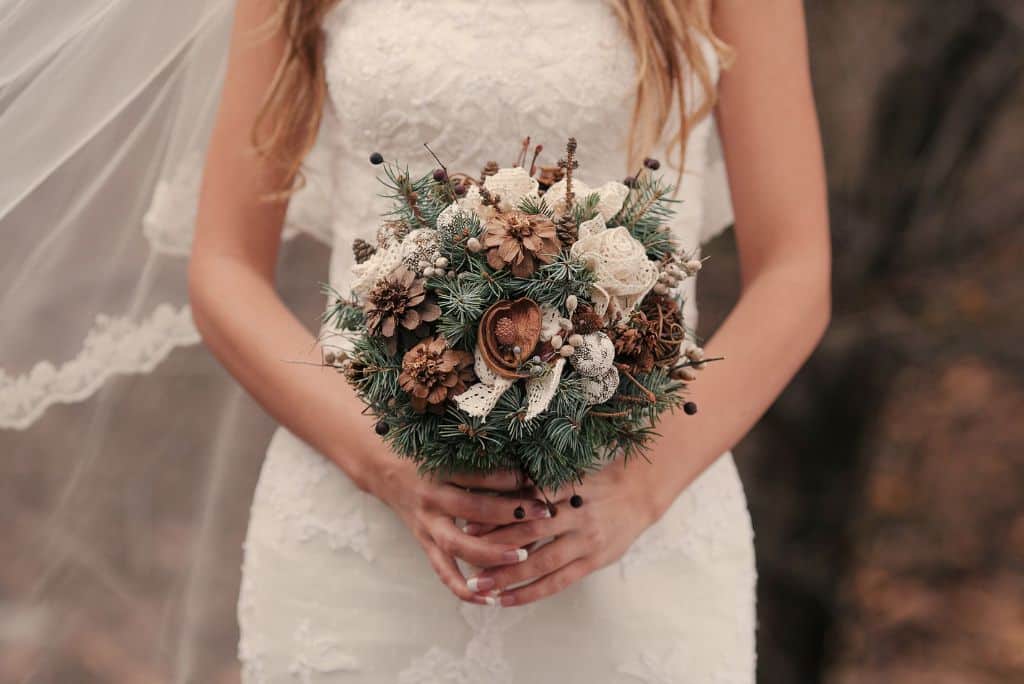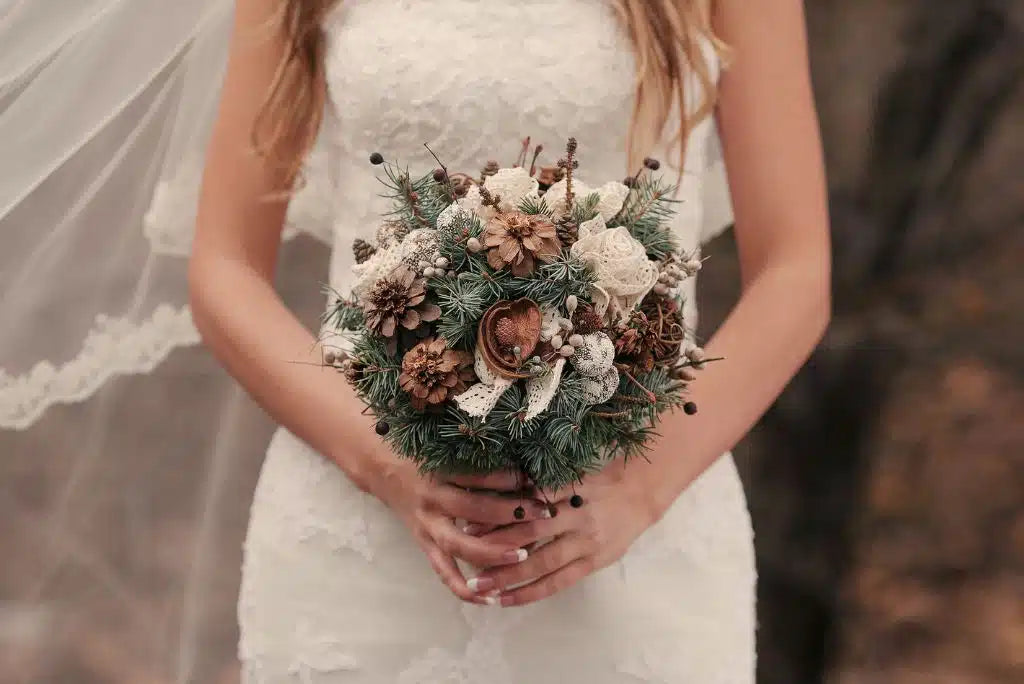The traditional bridal bouquet is one of the key highlights of a wedding, and this custom dates back centuries. But why do brides carry flowers, and what is the history behind bridal bouquets? Throughout history, the tradition of presenting the bride with flowers has symbolized good luck and love. Read on to explore the true meaning behind the flowers that brides carry on their special day.
Why Do Brides Hold Flowers?

Photo: BeeHaven Farm
It is pretty common to see brides carrying a bouquet of fresh flowers during their wedding, but what does it mean? Here is a brief overview of what this tradition meant and what it symbolized in different eras:
Antiquity
The wedding bouquet tradition has already been observed even during ancient civilizations. In fact, in places like Ancient Greece and Rome, it was pretty common for brides to carry herbs and spices during the wedding instead of flowers as it is believed to drive away any spirit of bad luck. Plants that have strong scents, such as dill and garlic, are also used during wedding ceremonies as they are believed to bring protection and fertility. Meanwhile, the Egyptians used fragrant herbs for their weddings because they were often associated with purity and divinification.
Elizabethan Era
In this era, the use of flowers in weddings was introduced and thus became more popular than herbs and spices. The brides used to carry small posies that are otherwise known as “nosegays” because it helped mask their unpleasant smell due to lack of hygiene during the period. This tradition of letting the bride carry flowers is also associated with the belief that each bloom holds a different meaning, so flowers are used as communication tools.
Victorian Era
Back in 1940, Queen Victoria got married to Prince Albert, introducing the popular idea of carrying a well-arranged floral bouquet. The Queen particularly chose a bouquet of myrtle, which symbolizes love and fidelity. Thus, the Victorian era saw the rise of “floriography,” which is known as the language of flowers. This also allowed bridesmaids to convey their messages through their bouquet choices.
Building on this floral tradition, the custom of "catching the bouquet" originated in England during the 14th century. While this practice has its roots in earlier times, it gained widespread popularity during the Victorian era (19th century) when wedding traditions became more romanticized and symbolic. Both the floral arrangements and the bouquet toss reflect the evolving significance of flowers in weddings as symbols of love, connection, and celebration.
Modern Age
In today’s modern-day weddings, the bridal bouquets have significantly shifted from being symbols into more of an aesthetic choice. Brides of today usually select their bouquet’s flowers based on personal preference, motifs, and color palettes. The floral arrangements of these bouquets range from minimalistic to luxurious and festive, but up until today, they still play a vital role during the wedding ceremony.
After learning about the history and significance of bridal bouquets, it's essential to know how to hold them correctly during your wedding ceremony. This guide offers key tips to ensure you hold your bouquet gracefully, enhancing your confidence and elegance as you walk down the aisle.
Popular Types of Flower Bouquets in History
Throughout the past, the world has witnessed different types of bridal bouquets and wedding flower ideas, each representing a different era and societal value. The following are among the most popular types of flower bouquets in history:
Posy Bouquet

Photo: Krissy K
This is a round and compact bouquet that gained significant popularity during the Victorian Era. It is usually minimalistic and has less greeneries, usually carried by brides and bridesmaids to dignify love and romance.
Cascade Bouquet

Photo: Paradise Wedding Chapel
This bouquet instantly became famous after Princess Diana’s wedding in 1981. The bouquet has a waterfall-like appearance that trails blooms and greeneries. This type of bouquet is usually seen in grand and luxurious weddings.
Tussie-Mussie

Photo: Sandi Edwards
A small, handheld flower bouquet that is often filled with symbolic blooms that gained popularity during the 18th-19th century. The bouquet is carefully arranged symbolically, creating a meaningful message.
Hand-Tied Bouquet

Photo: Something Borrowed Blooms
This is a free-form and natural-looking flower arrangement where the flowers are loosely gathered and tied around with a knot or bow. This bouquet style is often featured in weddings that have a rustic or bohemian touch.
Pomander Bouquet

Photo: Yan Qi
This is a spherical floral arrangement suspended from a ribbon and is usually carried by the bridesmaids or the flower girls. It recreates the traditional bouquets of herbs and spices from history, so it is often seen in vintage-themed weddings in modern times.
While this bouquet style remains a timeless choice for many brides, floral selections today vary widely based on personal preferences and budget. If you're wondering how much wedding flowers typically cost, explore our guide on wedding flower expenses to plan your dream arrangements wisely.
Bottom line
The traditional bridal bouquet comes from a long line of historical events that took place. Although the meanings have changed, it is undeniable that this tradition stays alive to this day. If you are looking for the perfect bridal bouquet to use for your wedding day, you may want to talk to our expert wedding florist, who will guide you in choosing the perfect bouquet according to your wedding theme.
The bridal bouquet is an integral part of any wedding. Numerous bouquets emerged during different eras, but whatever arrangement you may choose, it will always have the same values that commemorate your wedding day.
Frequently Asked Questions (FAQs)
1. Why do brides carry bouquets at weddings?
Brides carry bouquets as part of a long-standing tradition that originated in ancient times. Initially, herbs and flowers were used to ward off evil spirits and symbolize fertility, love, and happiness.
2. What flowers are traditionally used in bridal bouquets?
Traditional bridal bouquets often include roses (symbolizing love), lilies (representing purity), and myrtle (a sign of fidelity). Other popular choices vary based on cultural and personal preferences.
Choosing the right flowers for your bridal bouquet is a meaningful part of wedding planning, as each bloom carries its own symbolism. Whether you prefer classic roses or unique seasonal flowers, working with a skilled florist can help bring your vision to life.
3. How has the style of bridal bouquets changed over time?
Bridal bouquets have evolved from simple herbal arrangements to elaborate floral designs. The Victorian era introduced the language of flowers, while modern trends favor personalized, themed bouquets tailored to a bride’s unique style.

